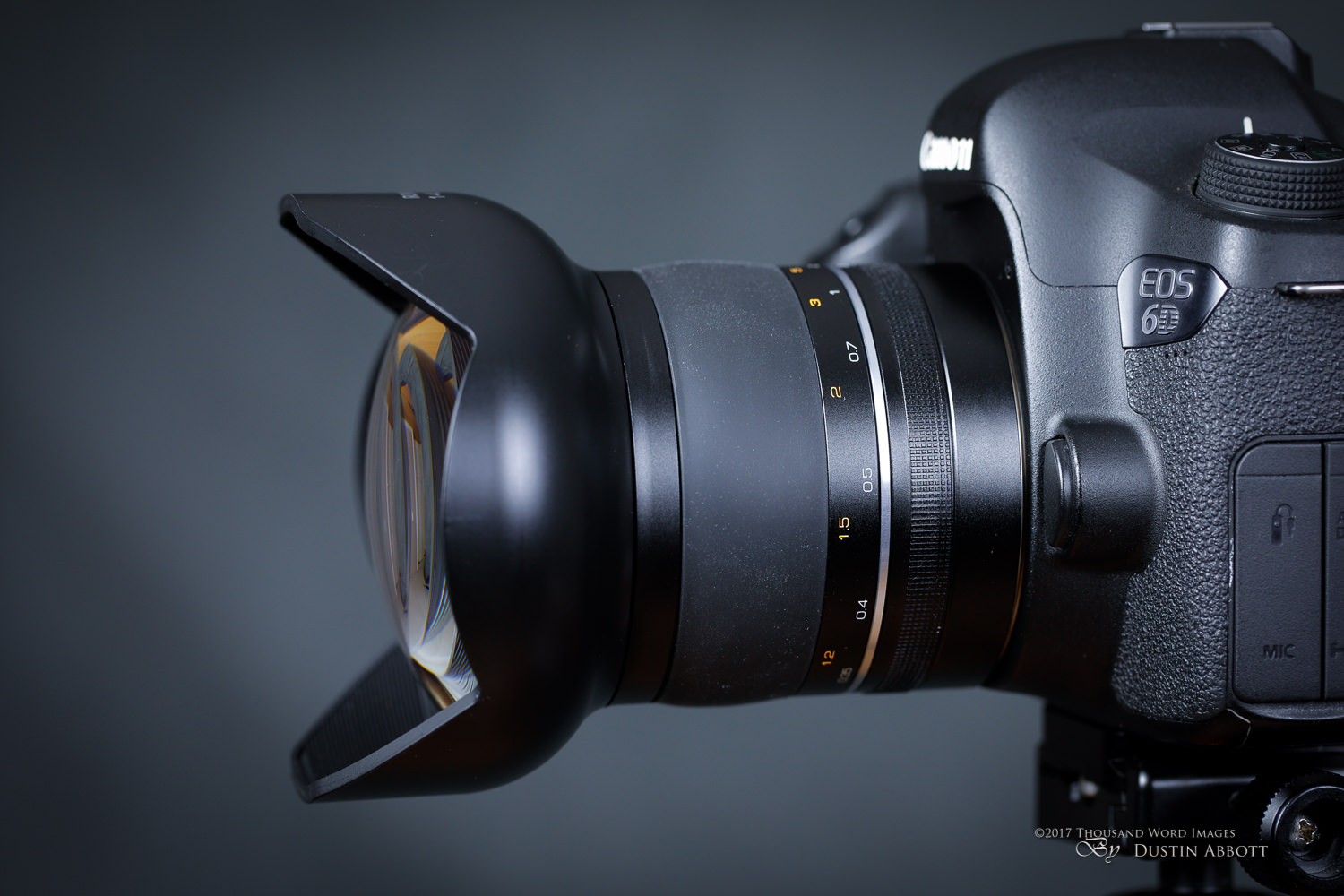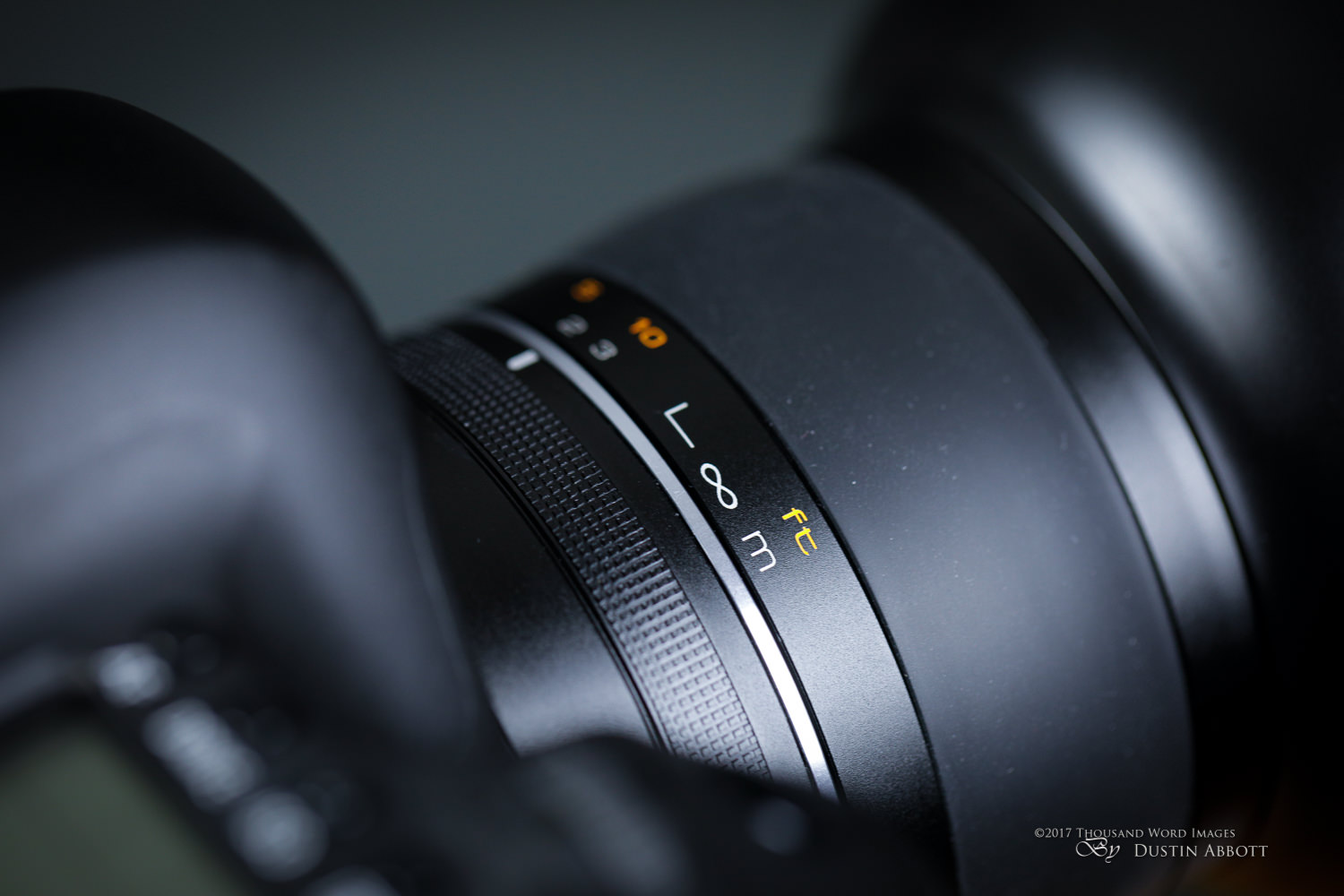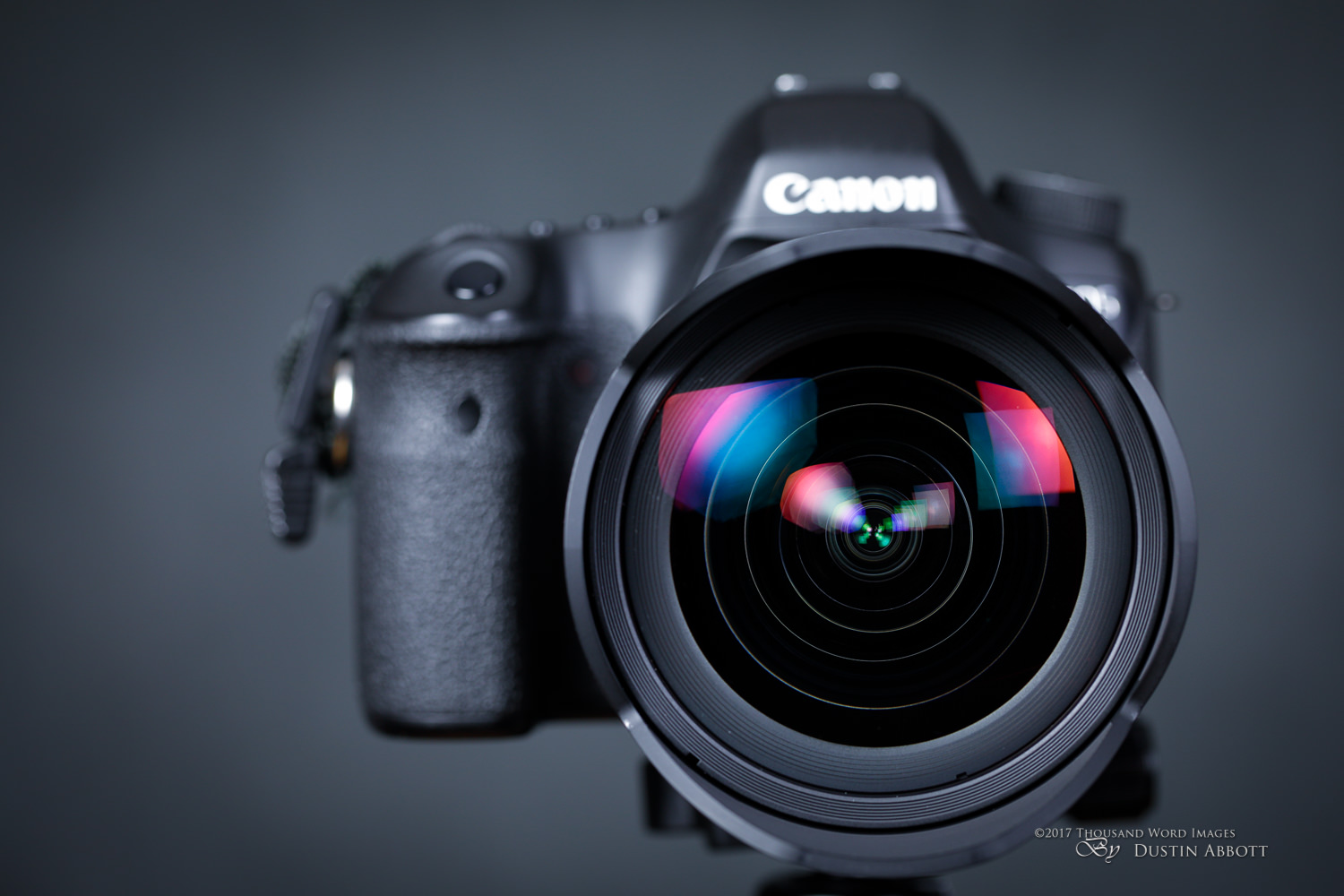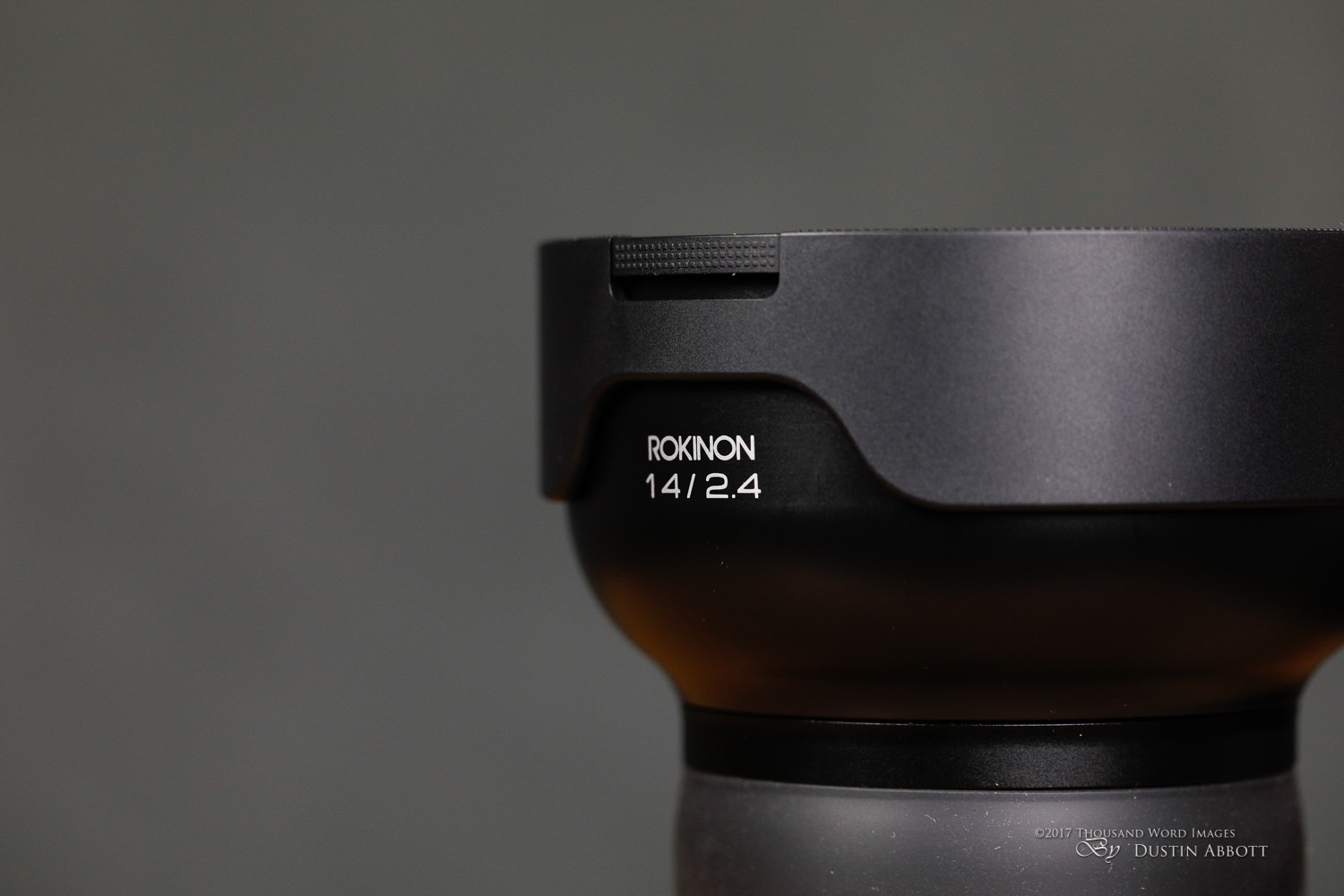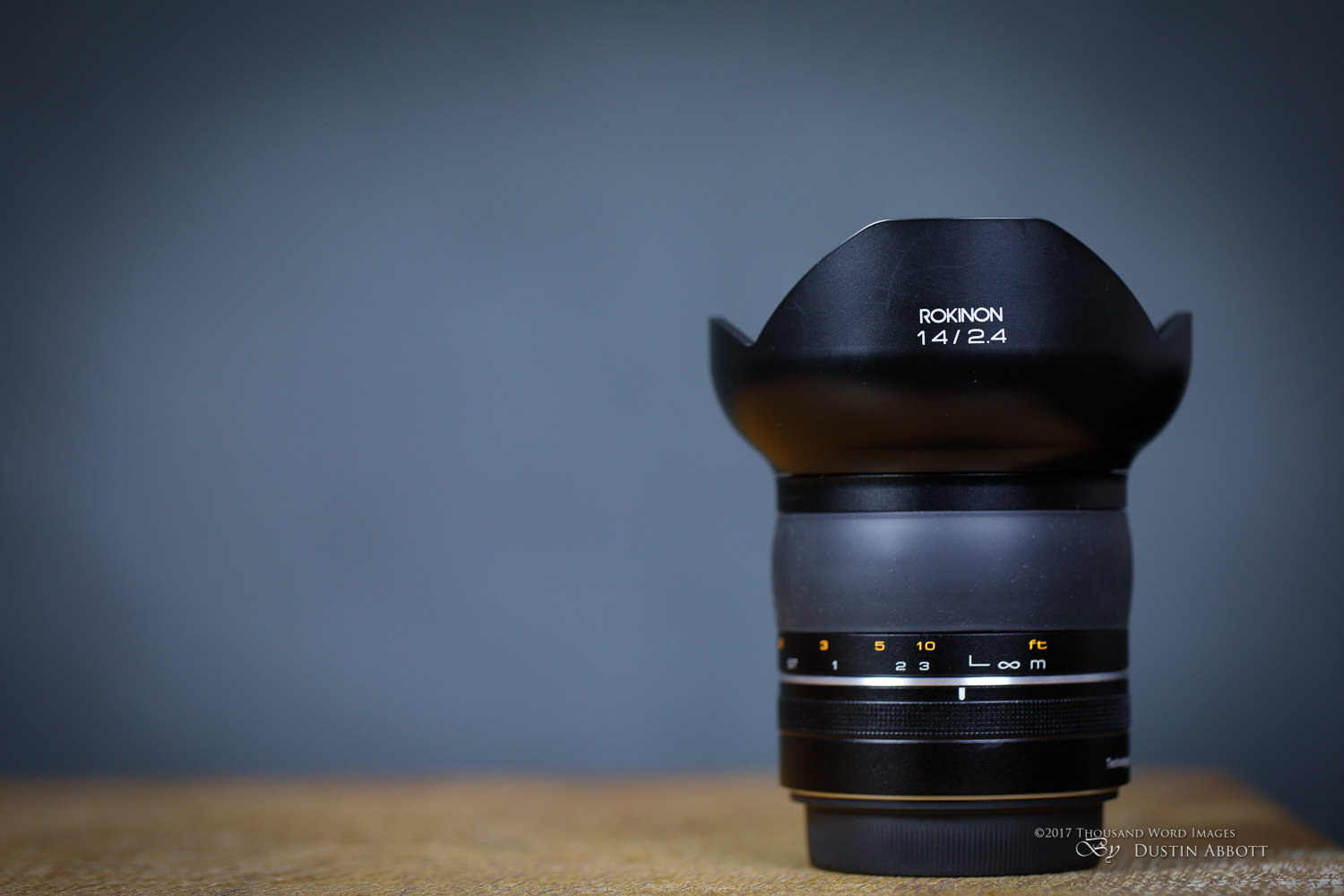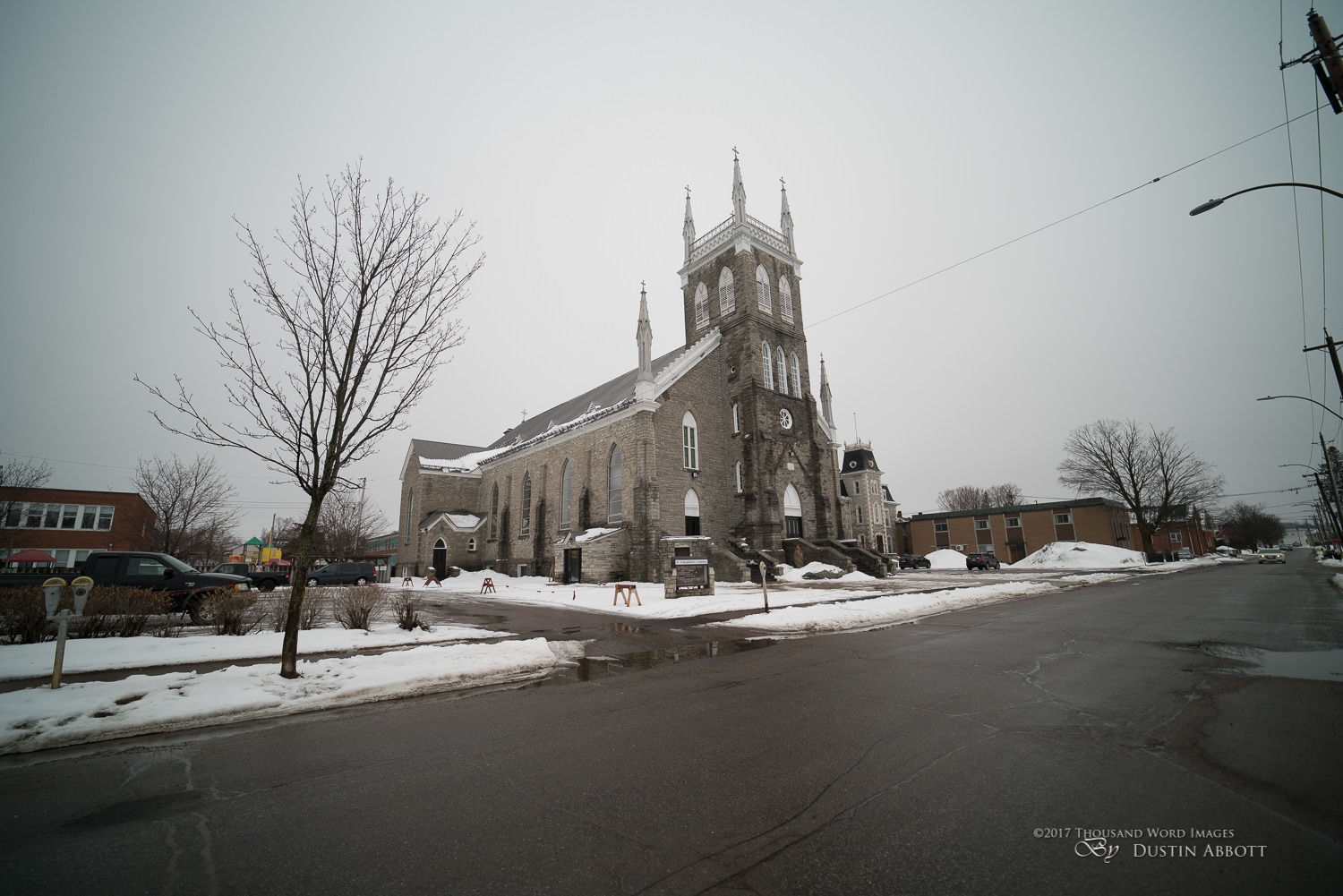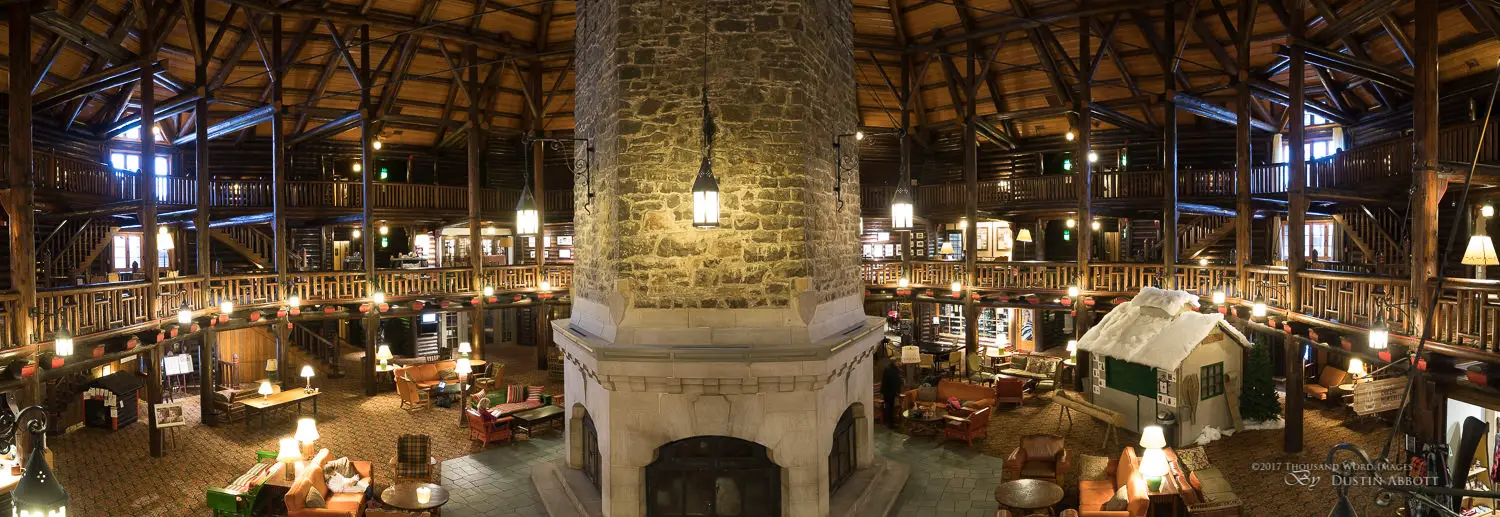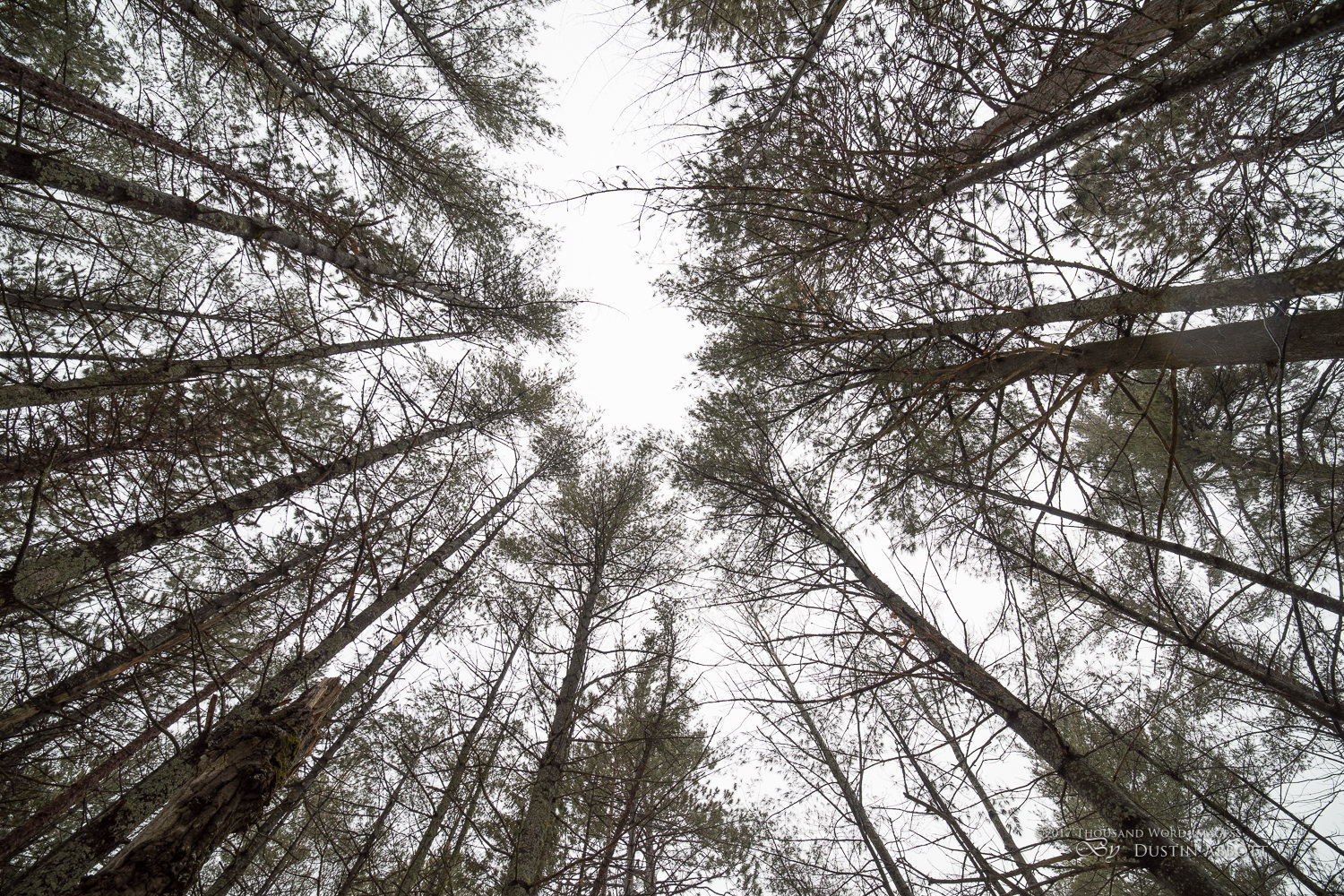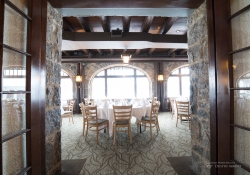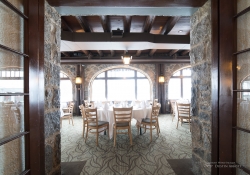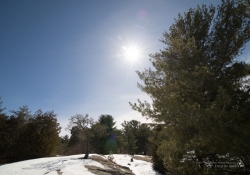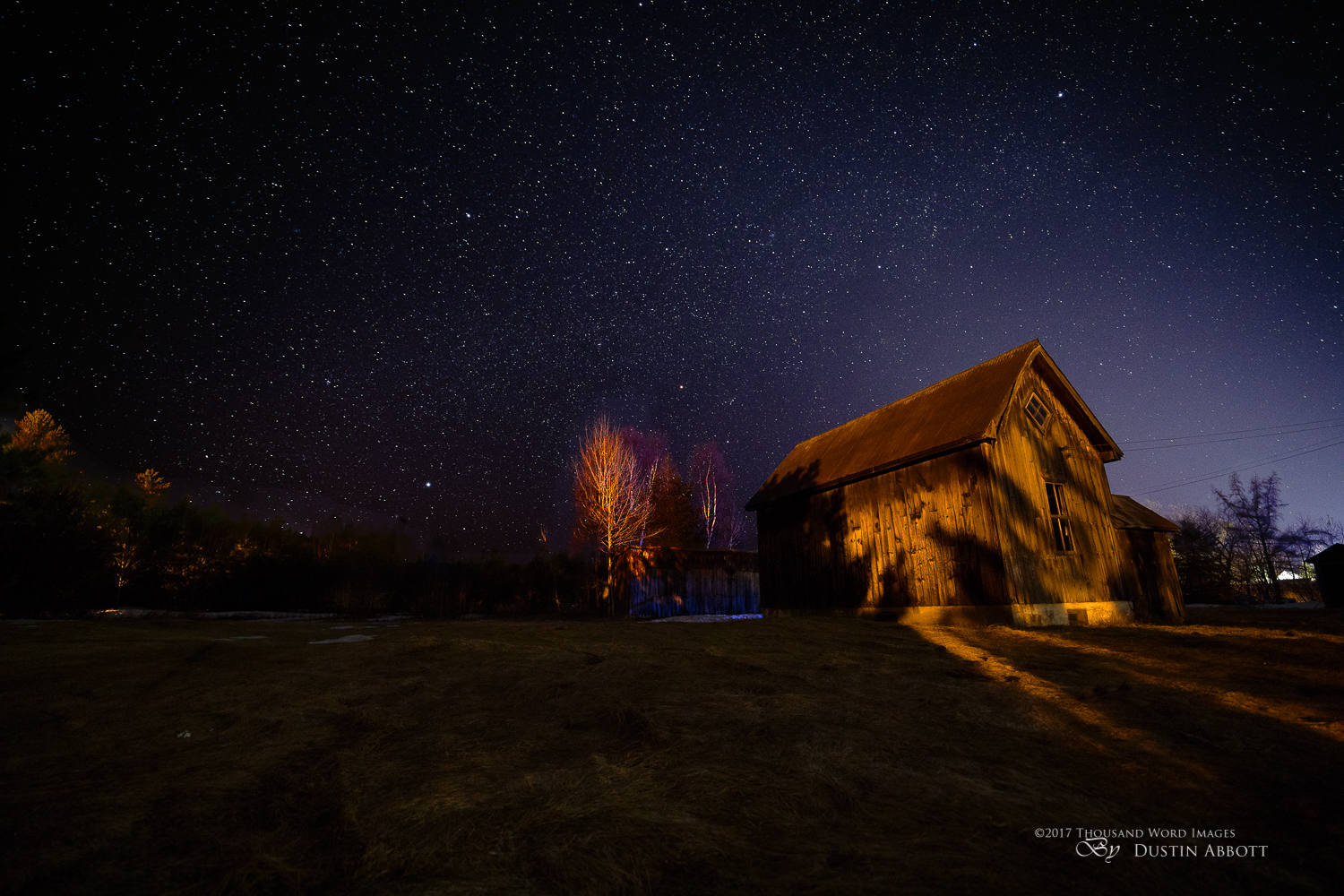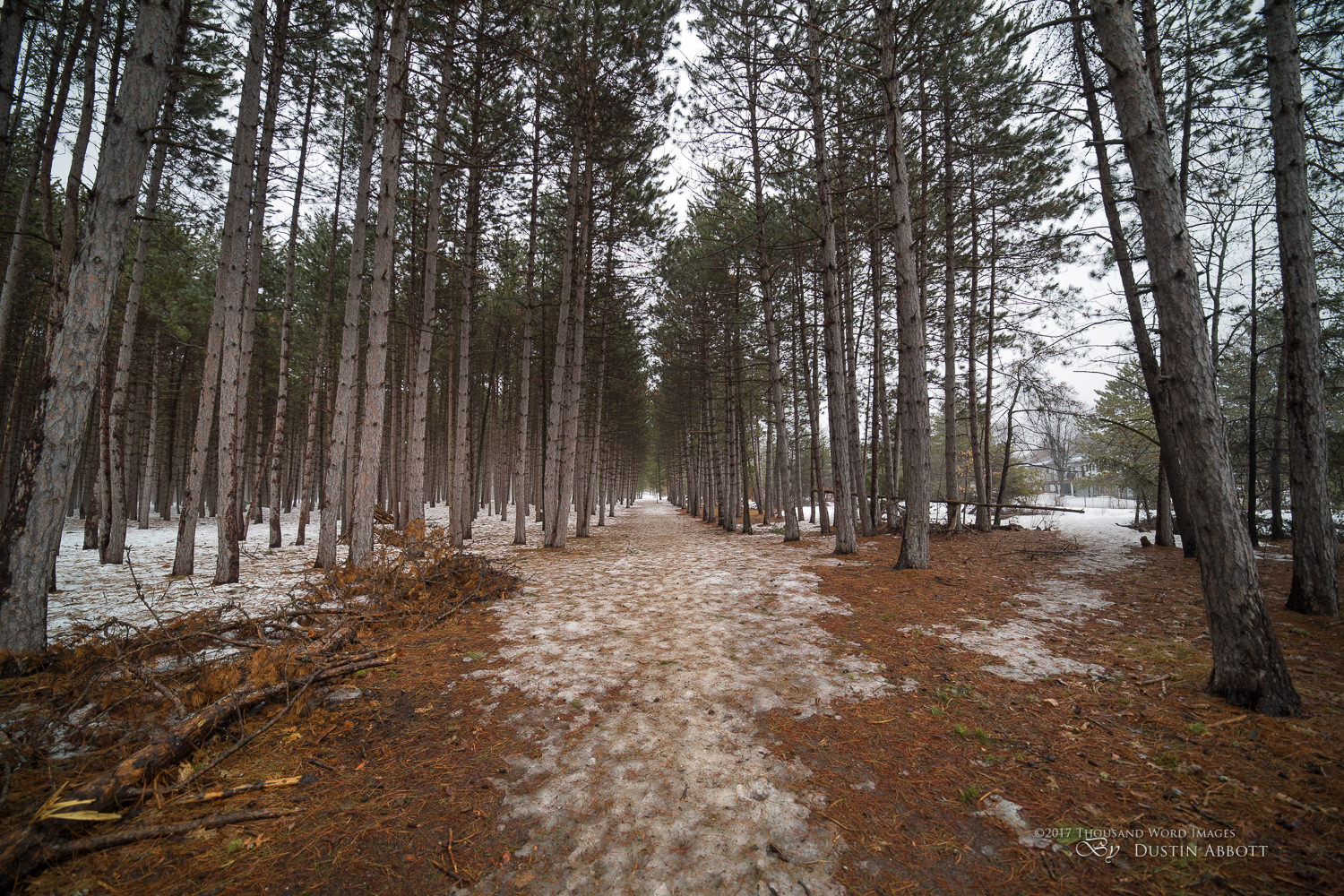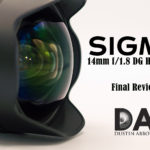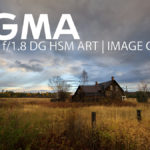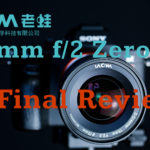The twin brands of Samyang and Rokinon have long been known for manufacturing inexpensive manual focus lenses that have often had excellent optical performance. The very first Rokinon lens I used/reviewed was the Rokinon 14mm f/2.8 wide angle lens. At the time I was using the Canon EF 17-40mm f/4L, which I ended up selling to purchase the Rokinon because it was so much sharper than the Canon I’d been using. At that point decent wide angle options for the Canon system were limited, but fortunately that has changed since that point. I eventually sold the Rokinon after reviewing the excellent Tamron SP 15-30mm f/2.8 VC lens, which I’ve continued to use since that point. The Rokinon 14mm was an excellent lens optically in many ways, but it also had some serious downsides, including poor handling (due to no electronics), extremely heavy vignette, and a fairly complicated distortion pattern, leaving me to only recommend it to those on a tight budget when compared to other new options. But Korean lens maker Samyang/Rokinon has recently debuted their “premium” line, known as Special Performance (SP). The series started with the release of two lenses, the SP 14mm f/2.4 along with the impressive SP 85mm f/1.2 that I’ve already reviewed. I was very interested in the SP 14mm when I heard of its announcement for a few reasons. First, the extra bit of light gathering from the [unusual] f/2.4 aperture gives it an advantage over the many f/2.8 alternatives, and secondly, the Premium series has a vastly improved build and handling that would [hopefully] solve the problems of the first generation lens. Does the SP 14mm live up to my expectations? Read on to find out!
Would you rather watch your review? Here’s my video review:
Rokinon SP 14mm f/2.4 Build, Features, and Handling
In this video episode I take a look at the overall build and handling of the lens.
The excellent image quality (and low price point) of the original Rokinon 14mm f/2.8 made me willing to overlook its rather poor handling. That lens (like this one) was manual focus only, but it also lacked electronics of any kind…which resulted in some additional handling quirks. Metering, for example, would sometimes be off, due to a lack of electronic communication regarding the aperture value (there was a manual aperture ring). Properly focusing the lens required some practice, as there was no focus confirmation chip involved either. You missed out on EXIF data (no electronics). On and on the list went. The build quality was okay, but nothing special. But Rokinon’s Premium Series solves most all of those problems.
This is still a manual focus lens, yes, but it now operates like a Zeiss lens, with a electromagnetically controlled aperture iris (you set aperture value in the camera or the let the camera choose the aperture) along with full electronic communication to the camera body. There is no longer a manual aperture ring. Proper electronics also means that metering is fine in all modes and provides a focus confirmation chip to help you get the lens focused more accurately. The SP 14mm also has a very, very nice build quality, with an aluminum alloy body (no more plastics!) and a focus ring with a rubberized texture that is quite similar to Zeiss’ Otus series (the material is a little more “grippy” on the Rokinon, which means that it does attract some dust and lint).
What isn’t Otus level is the action of the focus ring itself. While it moves smoothly, the damping is on the heavy side, requiring more effort than what I would like. The increased torque required makes it feel like there is a slight bit of “slippage” at times. This is probably specific to the copy I have, but I’m a little disappointed with it. The overall quality of the focus action is superior to the less expensive f/2.8 version, however. The overall focus throw is fairly long at around 200 degrees, which helps with accuracy.
There are nicely etched distance markings near the focus ring, which further helps in achieving accurate focus. I find that wide angle manual focus lenses are often very easy to actually focus. If you are using a typical landscape aperture of f/5.6 or smaller, you only need to set focus at roughly 6 feet (2m) and everything from about 2 1/2 feet to infinity will be in focus. Set it (test it a few times to make sure you are getting the results you want), and then forget about it. The only time you really need to worry about focus is if you are trying to focus at something close (the lens can focus down to 11.02″/0.28m, though the maximum magnification is a fairly poor 0.08x.) If you are focusing on a close object I recommend using Live View and magnify the image. If you nail focus the sharpness is extremely impressive even at f/2.4.
Because of the bulbous front element the lens cannot take traditional screw on filters (third party filter systems like the Fotodiox WonderPana [what I use] help fill that void). I’m not aware of any lenses wider than 15mm (at least that I’ve tested) that can take screw on filters.
The other aspect of that is that the lens has a fixed lens hood, but, unlike the body of the lens, the construction of the lens hood is actually a thick engineered plastic. I suspect that Rokinon’s designers felt that both the weight and resistance to knocks and bumps would be superior to a metal hood. While I’m not a fan of the much bulkier lens caps required by a fixed lens hood, I do appreciate the clever way that the lens hood actually clips into place; it alleviates any concerns about the lens hood inadvertently falling off (a problem I’ve had with a similar lens in the past).
There is only one fairly serious omission in the build and design (and no, I’m not talking about autofocus!) Though the SP 14mm is a premium lens styled much like Zeiss’ Milvus line, the lens lacks any kind of moisture resistance. This is, in my opinion, a serious oversight. I always like having moisture resistance, but I’m less concerned when using a medium telephoto. Usually a light rain isn’t going to kill such a lens, but more importantly you will be further away from major sources of water (like waves) due to the focal length. The opposite is true of wide angle lenses, where the nature of the focal length often requires you to be very close to such things. Most manufacturers have come to grips with the fact that modern consumers expect some kind of weather resistance on premium lenses, and Zeiss, Tamron, and Sigma have joined the first party manufacturers in including it. The omission on the SP 14mm makes it feel a little less premium to me, but, more practically, it may impact the decision process for those considering it for shooting landscapes, astrophotography, and, in particular, for shooting time lapses.
In a step towards a more premium appearance Rokinon has redesigned the front and rear caps to provide a more modern, upscale look, and the lens now comes with a lighted padded pouch that is very reminiscent of the lens pouch included with Canon’s L series lenses.
The size of the lens is roughly average for its class, with a number of competitors being much larger. It is 3.74″/95mm in diameter and is 4.31″/109.4″ long. It weighs in at a solid 1.74 lb (791 g) due to the high grade metal construction. In a very welcome change the lens has a modern nine-bladed aperture instead of the six aperture blades on the previous lens (the six bladed aperture produces both hexagonal shapes when stopped down and also fairly bland looking sunbursts/sunstars). The new lens does this much, much better. Check out the pretty starburst effect in this photo:
Overall the Rokinon SP 14mm f/2.4 is a very nicely made lens with a beautiful look. It is a huge improvement in build and handling over the less expensive f/2.8 version of the lens.
SP 14mm Image Quality
Check out this video episode where I interactively break down the image quality from the SP 14mm in detail:
The SP 14mm’s optical formula has grown in complexity when compared to the f/2.8 lens. It was 14 elements in 10 groups, while this new lens has a whopping 18 elements in 14 groups. The complex 18 elements, 14 groups optical design includes two aspherical elements, one hybrid aspherical element, two extra-low dispersion elements, and three high refractive index elements. It also has new coatings (Rokinon’s UMC, or Ultra-Multi-Coating). Does all of this fancy glass produce?
Resolution
I expected a great performance here based on my experience with the previous generation lens, and I was not disappointed. The lens is very sharp even from f/2.4, and, while there is a heavy vignette, look at the crops from across the frame:
The resolution from the lens is very, very consistent across the frame. I found that the while the previous generation lens had a lot of sharpness, it was let down by a “stretching” effect due to distortion at the edges of the frame. That’s not the case here, and I feel like the SP 14mm is delivering a flatter focal plane. This may have been accomplished by slightly reducing the actual angle of the view on the lens. Though it and the f/2.8 version are both technically 14mm lenses, the older lens had a very wide 115.7 degree field of view while the new lens has a narrower 114.12 degrees. I could tell that it framed less wide when I started comparing it to the Tamron 15-30 VC. Most photographers will probably find this a worthy tradeoff. The field of view is a slight bit narrower, but the image quality is more consistent across the frame.
I was consistency impressed when I zoomed in to a pixel level on images and found near perfect sharpness across the frame. Take a look at the pixel level crops from this panoramic image of the amazing central hub of the Fairmont Chateau Montebello (click the link to read more and see many more photos of this amazing place):
I compared the lens against the Tamron with both lenses mounted on a 42MP Sony A7R II body that I happened to have at the time for another review. The Tamron could only match the resolution of the Rokinon in the center, but was easily bested on the edges of the frame:
There were a couple of other things I noted in that comparison. First, the Tamron suffers from lateral chromatic aberrations along the edges of the frame, while the SP 14mm seems to avoid chromatic aberrations of either the lateral or the LoCA variety. Chromatic aberration control is excellent, and I can’t remember seeing any CA in field use at all.
A Few Pans
On a less positive note I felt like there was a bit of a greenish tint to the image when I compared the lens against the more color neutral Tamron lens. The SP 14mm reminded me of the Laowa 12mm f/2.8 Zero D lens in this respect:
The biggest negative on the image quality is a very pronounced vignette at wide apertures that doesn’t completely disappear until about f/8. You will definitely see it in certain settings. As there isn’t a profile in Lightroom/ACR as of yet I had to do a manual correction and found that it took a near maximum value at f/2.4 to erase it:
Beyond that, however, there is nothing to criticize in the IQ department. The list of optical strengths in long.
A Few Picks
The SP 14mm isn’t free from distortion but it has made huge strides over the f/2.8 version, which suffered from a fairly complex distortion pattern that required a LOT of correction. I would argue that you might actually end up with a wider image post correction with the new lens due to the destructive distortion on the old lens. Look at this example.
In the first image (straight from camera), you can see some curvature in the doors of the dining room due to some barrel distortion. In the second image I’ve just added a value of +9 in Lightroom’s Distortion Correction slider. In the third image I’ve actually use Lightroom’s full “Upright” feature to show that you can achieve near perfect results with minimal loss of image width. Here’s a second example from the amazing pool at the Chateau Montebello. In this case I’ve just applied the +9 value to the right hand image:
There are lenses with lower distortion (the aforementioned Laowa along with the Sigma ART 12-24mm f/4 come to mind), but this is a huge improvement over the previous generation lens, and I think with careful use the lens could function fine for occasional architectural use. Here’s a few more architecture type shots that I’ve taken with it:
Another area of strength (particularly for a lens with a curved front element) is flare resistance. The lens does exhibit a slight bit of ghosting, but contrast remains very strong. The second and third images in this series show that if you are conscious of where you place the sun in relation to the frame you can easily eliminate ghosting altogether with only a minor shift in composition.
But I’ve saved the best for last. Whenever I test wide angle lenses I am continually on the lookout for a great night sky/astrophotography lens. The f/2.8 version of the lens was already excellent for night sky shooting save for the incredibly heavy vignette (worse than this lens) and some stretching distortion near the edges of the frame. That lens was good; this one is better. It has the advantage of more light gathering (f/2.4 vs f/2.8), a bit less vignette, less distortion, and, more importantly, an even better control of comatic aberrations (coma). Coma is seen as “tails” or “wings” growing on star points and making them look more like UFOs or flying ducks. Astro images are very cool, but bad coma kills them. The Rokinon SP 14mm f/2.4 might just be the best lens I’ve seen for this so far. It exhibits very low coma, has a wonderfully wide angle of view, and has an aperture advantage over all competitors (until the Sigma 14mm f/1.8 ART arrives). Based on my previous experience with a wide variety of Sigma lenses, however, I fully anticipate that the coma control on the SP 14mm will most likely exceed the coma control of the Sigma.
Here’s a look at a night sky image along with a crop:
That tiny bit of stretching of stars in the extreme corner is worst case scenario. The SP 14mm does does awesome here, and works great even at f/2.4.
You can find more images in the Lens Image Gallery here. As you can see, there is minimal coma and the great sharpness of the lens produces a crisp night sky. This is an excellent result, and beats the Tamron 15-30mm I’ve been using for this purpose in all ways save one – the vignette, which is an area of real strength for the Tamron. If you have been looking for a night sky lens, I think this may be the one to beat.
Overall this lens has a lot of optical chops, and I don’t recall having seen a sharper wide angle lens before (and I’ve reviewed a lot of them!) I’m very impressed by the images I’ve gotten out of the SP 14mm.
Conclusion
Samyang/Rokinon have tested a new price point for these new premium lenses. Both the Rokinon SP 85mm f/1.2 and the 14mm f/2.4 came with a price of $999 USD, which tops their other offerings by a good margin (most of which have been $600 or less). I’m already seeing some signs that the market may not be ready for thousand dollar Samyangs and Rokinons, as of right now B&H Photo is featuring an instant savings of $200 off the SP 14mm (bringing the price to a friendlier $799). I can’t recall having seen such a new lens so heavily discounted so quickly in the past, so I suspect that Rokinon is trying to inject some movement into sales of the lens. This may be a temporary measure, or it may indicate that they have already determined that a price drop is necessary. I think this lens is a strong value at $799, however, and it competes very favorably with Zeiss lenses in many categories (Zeiss is definitely tops in color rendition and overall rendering). I sincerely hope that more people discover this lens, however, as I think it may quickly emerge as a hidden gem. The challenge is that it is a bit expensive for many mainstream photographers, and may get overlooked by professionals and more well-healed amateurs. That’s a shame, because this lens really delivers.
If you are looking for a quality astrophotography lens, look no further. This lens is exceptional for shooting the night sky, and I found it very impressive for all other photographic pursuits, too. It’s not perfect. It has too much vignette, and I feel that not including weather sealing was a serious oversight, but I also think it is a lot of lens, and the overall build is very nice. I won’t be surprised if the Rokinon SP 14mm f/2.4 ends up in my own kit at some point down the road, and I sincerely hope that more lenses in this new premium line are coming from Samyang/Rokinon. I’ve been very impressed with both entries in the series so far.
Pros:
- Upscale build, complete with aluminum alloy housing
- Awesome resolution across aperture values
- Exceptional coma control
- Excellent chromatic aberration control
- Strong contrast and good flare resistance
- Inclusion of electromagnetic aperture iris and electronic coupling improve handling
- Improved distortion control
Cons:
- No weather sealing
- Focus ring damping a little heavy
- Fairly heavy vignette
- Slight greenish cast in some images
Gear Used:
Canon EOS 5D Mark IV (5D4): B&H Photo | Amazon.com | Amazon Canada
Canon EOS 6D DSLR Camera (Body Only)
Rokinon SP 14mm f/2.4: B&H Photo | Amazon |
Sony A7R II | B&H Photo | Amazon.com | Amazon.ca
Adobe Lightroom CC Software for Mac and Windows (Boxed Version)
Adobe Photoshop Creative Cloud 1-Year Subscription
Alien Skin Exposure X2 (Use Code “dustinabbott” to get 10% anything and everything)
Purchasing your gear through B&H and these links helps fund this website and keeps the articles coming. Thank you for your support.
Great News! I can now offer a 5% discount on all purchases at Amplis Foto, Canada’s Leading Photographic Supplier. Please enter discount code: AMPLIS52016DA in your cart. It is good for everything in your cart, and is stackable with other coupons, too! It will take 5% off your entire order! Proceeds go towards keeping this site going and providing you with new reviews!
Check me out on: Google+: | Facebook: | Twitter: | Flickr: | 500px: | Sign Up for My Newsletter :




